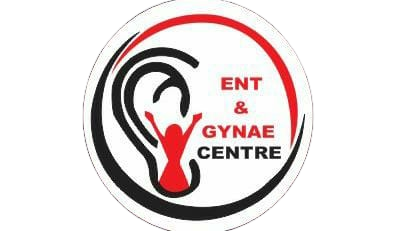Nasal bleeding, also known as epistaxis, is a common condition where blood flows from one or both nostrils. While often not serious, nasal bleeding can be alarming and may require medical attention if severe or recurrent. Understanding the causes, treatment, and prevention of nasal bleeding is essential for effective management.
Types of Nasal Bleeding
Anterior Nosebleeds
- Location: These occur from the front part of the nose, usually from the nasal septum (the wall between the two nostrils).
- Common in: Children and young adults.
- Characteristics: Blood typically flows from one nostril and is usually easy to control.
Posterior Nosebleeds
- Location: These occur from deeper within the nose, where larger blood vessels are located.
- Common in: Older adults and those with high blood pressure or bleeding disorders.
- Characteristics: Blood often flows down the back of the throat and may be harder to control.
Common Causes of Nasal Bleeding
Dry Air
- Overview: Dry indoor air, especially in winter, can dry out the nasal membranes, leading to cracks and bleeding.
- Solution: Use a humidifier to keep the air moist.
Nasal Trauma
- Overview: Picking the nose, blowing the nose too hard, or getting hit in the nose can damage blood vessels and cause bleeding.
- Prevention: Avoid aggressive nose-blowing and protect the nose during activities.
Infections
- Overview: Upper respiratory infections, colds, or sinusitis can irritate the nasal passages and lead to bleeding.
- Management: Treat the underlying infection and keep the nasal passages moist.
Allergies
- Overview: Allergies can cause inflammation and irritation of the nasal membranes, increasing the risk of bleeding.
- Management: Use antihistamines or nasal sprays to manage allergy symptoms.
Medications
- Overview: Blood thinners (e.g., aspirin, warfarin) and nasal sprays (like decongestants) can contribute to nosebleeds by affecting blood clotting or irritating the nasal lining.
- Consultation: Talk to a doctor about managing medications if nosebleeds are frequent.
Nasal Polyps or Tumors
- Overview: Abnormal growths in the nasal passages can cause obstruction and bleeding.
- Treatment: May require surgical removal or other medical interventions.
Hypertension (High Blood Pressure)
- Overview: High blood pressure can contribute to posterior nosebleeds, which are more serious and difficult to control.
- Management: Control blood pressure with medication and lifestyle changes.
Bleeding Disorders
- Overview: Conditions like hemophilia or thrombocytopenia, which affect the blood’s ability to clot, can lead to frequent or severe nosebleeds.
- Consultation: Seek medical advice for appropriate treatment and management.
Substance Use
- Overview: The use of recreational drugs, especially inhaled drugs like cocaine, can damage the nasal lining and lead to frequent bleeding.
- Treatment: Seek help for substance abuse and avoid nasal irritants.
Treatment for Nasal Bleeding
First Aid for Anterior Nosebleeds
- Sit Upright: This helps reduce blood pressure in the veins of the nose and prevents swallowing blood.
- Lean Forward: Leaning slightly forward helps the blood drain out through the nose rather than down the throat.
- Pinch the Nostrils: Use the thumb and index finger to pinch the soft part of the nose just below the nasal bridge, holding for 10-15 minutes.
- Apply a Cold Compress: Placing an ice pack or cold compress on the nose or back of the neck can help constrict blood vessels and reduce bleeding.
Treatment for Posterior Nosebleeds
- Seek Medical Attention: Posterior nosebleeds often require professional medical treatment, as they are harder to control.
- Nasal Packing: A doctor may insert nasal packing or gauze to stop the bleeding.
- Cauterization: This procedure involves sealing the bleeding blood vessel with heat or chemicals.
- Ligation: In severe cases, surgery may be needed to tie off the bleeding vessels.
Prevention of Nasal Bleeding
Keep the Nasal Passages Moist
- Saline Nasal Sprays: Regularly use saline sprays to keep the nasal passages moist.
- Humidifiers: Use a humidifier in dry environments to add moisture to the air.
Avoid Nasal Irritants
- Limit Use of Decongestant Sprays: These can dry out and irritate the nasal lining.
- Avoid Smoking and Secondhand Smoke: Smoke can dry out and irritate the nasal passages.
Protect the Nose
- Avoid Nose Picking: Encourage children to avoid picking their noses.
- Wear Protective Gear: Use appropriate protective gear during sports or activities that may cause nasal injury.
Manage Allergies
- Allergy Medications: Use antihistamines or nasal corticosteroids to control allergy symptoms that may lead to nasal irritation and bleeding.
Monitor Blood Pressure
- Control Hypertension: Regularly check and manage blood pressure to reduce the risk of posterior nosebleeds.
When to Seek Medical Attention
- Frequent Nosebleeds: If you experience frequent or recurrent nosebleeds, it’s important to seek medical advice.
- Heavy Bleeding: If the bleeding is heavy or lasts more than 20 minutes despite home treatment, seek immediate medical attention.
- Nosebleeds with Other Symptoms: If the nosebleed is accompanied by symptoms like dizziness, fainting, or if it occurs after a head injury, seek emergency care.
Conclusion
While nasal bleeding is often benign, understanding its causes and proper treatment is important for effective management. By taking preventive measures and knowing when to seek medical care, you can reduce the frequency and severity of nosebleeds.
